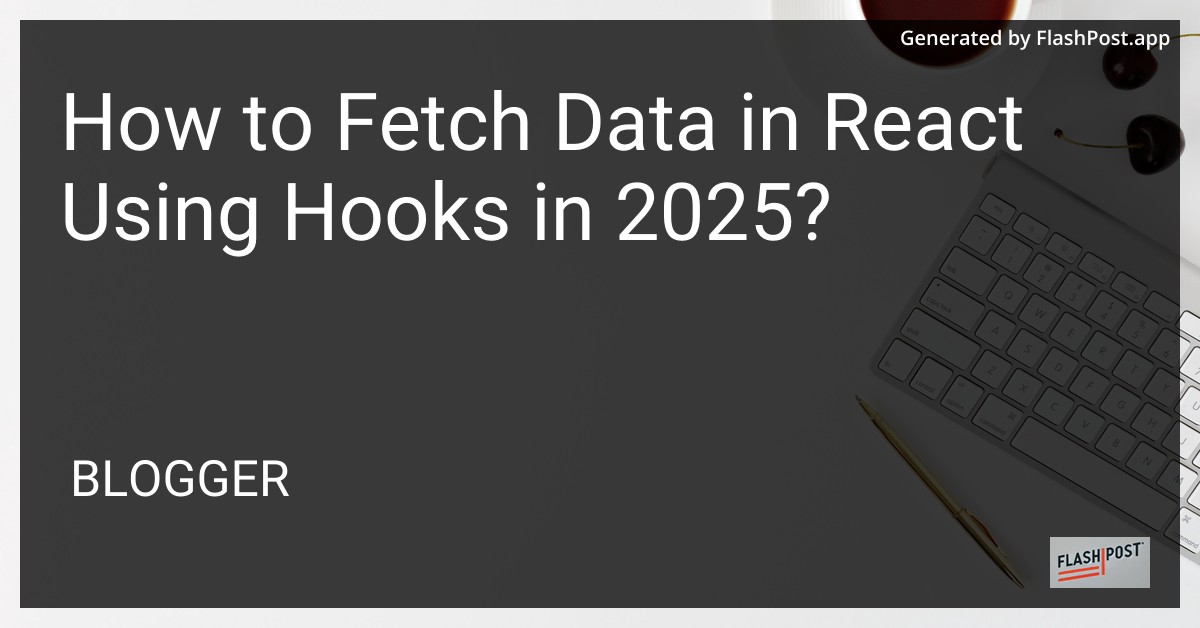How to Fetch Data in React Using Hooks in 2025?

How to Fetch Data in React Using Hooks in 2025
Fetching data in React has consistently evolved over the years. In 2025, using React Hooks is the preferred method for managing data fetching seamlessly. This article will guide you through the process of fetching data in React using hooks, ensuring optimal performance and user experience.
Introduction to React Hooks
React Hooks, introduced in version 16.8, revolutionized React development by allowing you to use state and other React features without writing a class. In 2025, hooks are more powerful than ever, with many libraries and frameworks enhancing their functionalities. We will use the useState and useEffect hooks to fetch and display data.
Setting Up Your React Environment
Before we dive into fetching data, ensure your React environment is properly set up. If you’re new to setting up a React project or need a refresher, check out these resources for tailwind react.js customization and best practices on react.js deployment.
Step-by-Step Guide to Fetching Data with Hooks
1. Initialize Your React Component
First, create a functional React component where we’ll manage our data fetching logic.
import React, { useState, useEffect } from 'react';
const DataFetchingComponent = () => {
// State to store data and loading state
const [data, setData] = useState(null);
const [loading, setLoading] = useState(true);
return (
<div>
{loading ? <p>Loading data...</p> : <DataDisplay data={data} />}
</div>
);
};
export default DataFetchingComponent;
2. Implement the useEffect Hook
The useEffect hook is ideal for side effects in functional components, such as data fetching.
useEffect(() => {
const fetchData = async () => {
try {
const response = await fetch('https://api.example.com/data');
const result = await response.json();
setData(result);
setLoading(false);
} catch (error) {
console.error('Error fetching data:', error);
setLoading(false);
}
};
fetchData();
}, []); // Empty dependency array ensures this runs once when the component mounts
3. Create a Component to Display Fetched Data
const DataDisplay = ({ data }) => (
<div>
<h2>Fetched Data:</h2>
<pre>{JSON.stringify(data, null, 2)}</pre>
</div>
);
Best Practices for Data Fetching in 2025
- Abort Fetch on Component Unmount: Use the AbortController to stop fetch requests when components unmount to avoid memory leaks.
- Error Handling: Implement robust error handling to provide a smooth user experience during network failures.
- Use Libraries: Leverage libraries like SWR or React Query for advanced data fetching and caching mechanisms.
Conclusion
Fetching data in React using hooks is streamlining app development with its straightforward syntax and powerful state management. Whether you are building a small application or a large-scale project, understanding how to effectively fetch and manage data with hooks is crucial. For further learning, explore react.js book discounts to find resources that dive deeper into React development in 2025.
By mastering data fetching with hooks, you’ll be well-equipped to handle any data-driven requirements your application may have in the dynamic landscape of web development.
Comments
Post a Comment